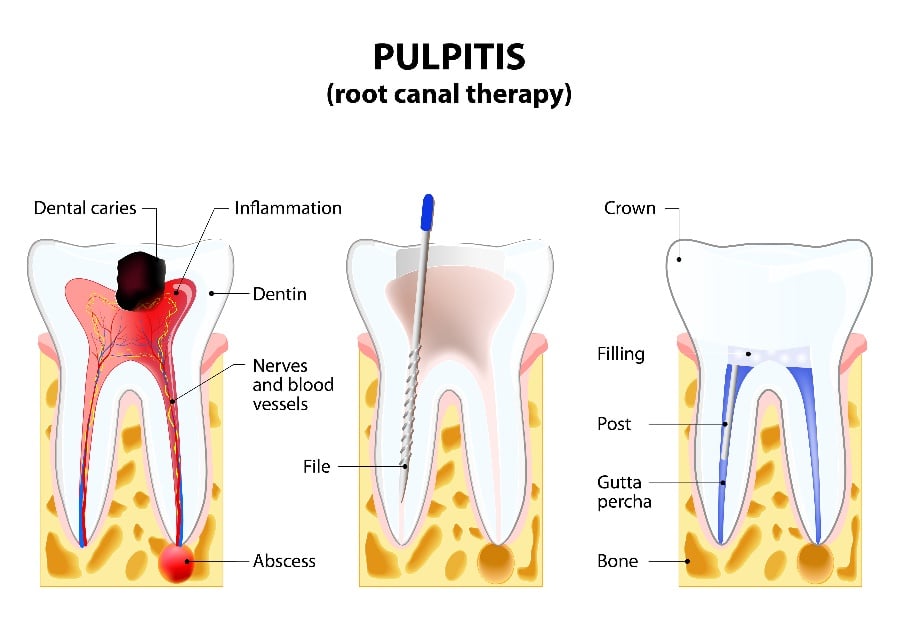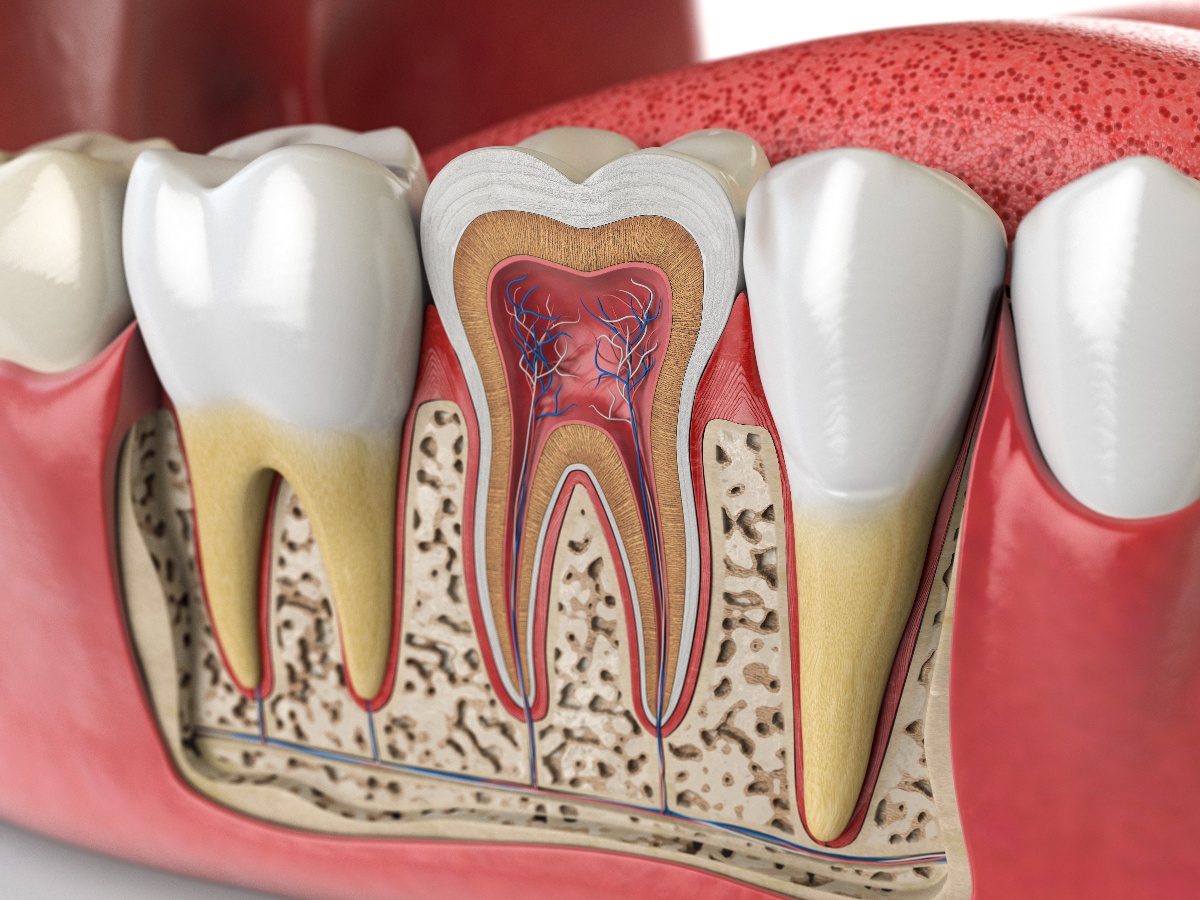A 2019 survey by the Centers for Disease Control and Prevention (CDC) revealed that about 65% of adults aged 18 and over sought dental care in the past year. In 2018, 85.9% of children aged 2-17 years visited a dentist.
These numbers indicate that a significant proportion of the American population suffers from a form of dental disease and emphasize how critical professional dental care is.
Among the many procedures provided during dental visits is root canal therapy. Unfortunately, only a handful of people understand the procedure and what it entails. This article provides critical insights into the treatment method, how to tell when you need the procedure, and the benefits.
Understanding root canal treatment
Root canal therapy is a treatment procedure designed to repair or save a badly decayed or infected tooth by eliminating bacteria. It can also prevent tooth reinfection and maintain proper dental health.
The dental pulp is typically the targeted part of the tooth during a root canal therapy procedure. It contains blood vessels and nerves, but sometimes it may become infected, decayed, or damaged. A dentist will often remove the pulp, clean the inside, and seal it to save a natural tooth, restore its function and aesthetics.
Dental Pulp Explained
Also known as the pulp chamber, the dental pulp is the soft area within the tooth's center that contains blood vessels, connective tissues, and nerves. The nerves extend to the root of the tooth, while the canals run from the tip of the root and into the pulp chamber.
Once the tooth grows above the gum, the nerve is not usually vital. It only serves as a sensory organ that gives the tooth sensitivity to cold and heat. Whether or not it is present, the tooth functions normally, but it becomes more vulnerable to fracture once the root canal is performed.
Causes and Risk Factors for Damaged Dental Pulp
When one has a decayed or infected tooth pulp, s/he is said to have pulpitis. It can affect one or more teeth. There are two types of pulpitis:
- Reversible pulpitis – A mild bacteria-caused inflammation in the tooth pulp but remains healthy enough to be treated and saved.
- Irreversible pulpitis – Extensively infected pulp that causes severe pain; the pulp chamber becomes too decayed to save.
What are the risk factors?
Several factors can cause one to develop pulpitis. For instance, if you live in a region without fluoridated water or have underlying medical conditions, such as diabetes, your chances of developing pulpitis are high.
While children and adults can suffer from the condition, hygiene habits and quality of dental care largely determine the risk. Some lifestyle behaviors that heighten the risk of pulpitis include:
- Poor dental hygiene, such as failure to brush the teeth after meals or regular dental visits
- Consuming high sugar foods or drinking beverages with refined carbohydrates
- A professional hobby that exposes the tooth to damage, such as boxing or hockey
- Chronic bruxism or grinding of the teeth.
What to Expect During Root Canal Treatment
A major misconception about tooth canal therapy is that it's painful. In fact, those who've experienced it say they only endure mild pain similar to having a tooth filling. The truth is: it's a quick and comfortable procedure that relieves pain and saves your natural tooth. The period leading to seeking dental care is more painful than the treatment itself.
A dentist or endodontist performs a root canal. An endodontist is a health professional specializing in the prevention, diagnosis, and treatment of pulpitis or nerve of the tooth. A dentist will often refer you to an endodontist in instances of irreversible pulpitis.
In most cases, you may not need local anesthesia because the nerves are destroyed, but a professional dentist will still anesthetize the area to make it numb, so you feel more relaxed.
Nonetheless, you can expect the following steps during root canal:
- The dentist will first take an X-ray to examine the tooth and jawbone to determine any signs of infection.
- A sheet of rubber known as a rubber dam is placed in the infected area to keep it dry and free of saliva for easy treatment.
- The dentist will then drill the tooth to access the pulp chamber. The decayed nerves and bacteria are then removed, and the area is thoroughly cleaned using root canal files. They are placed inside the access shaft and worked down the tooth's entire length to remove bacteria and scrub the sides of the root canals. During the process, the dentist will constantly spray sodium hypochlorite or water to rid the area of the resulting debris.
- Once the chamber and canals are completely cleaned, the tooth is sealed. The timeline for sealing varies based on the tooth's health. If there's an infection, the dentist will put medication inside the tooth to treat, and the recovery process may take as long as one to two weeks. If the tooth is healthy, sealing is done the same day. Afterward, a temporary filling is placed around the hole (between appointments) to prevent food particles and saliva from affecting the area.
- During your next appointment, gutta-percha, a compound comprising sealer paste and rubber, is placed inside the root canal. A filling is then put in to seal the access hole created during the initial drilling process.
- The chances are high that you may require further tooth restoration after a root canal. A tooth often has a large filling and other weaknesses. remove, the dentist may perform a crown and post or other restoration procedures to protect it from fracture and restore it to full, healthy function.
Benefits of Root Canal Therapy
People require root canal therapy for various reasons, and there are several strong arguments for why saving your natural tooth is ideal. The procedure helps maintain good oral hygiene, ensures proper tooth function, and prevents the need for additional dental procedures. The following are the top benefits of root canal treatment.
- Virtually Painless Procedure
Contrary to popular belief, root canal therapy is almost painless and the alleviated discomfort is compared to having the entire tooth extracted. During the procedure, the use of local anesthesia makes the treatment six times less painful than a tooth extraction.
- Efficient and Affordable
Extracting and replacing a tooth is more costly and requires additional appointments as the tooth will need to be replaced with an implant, bridge or denture. Contrarily, root canal therapy requires less time and is cost-effective as most health insurance plans cover endodontic treatments.
- Aesthetic Results
After a root canal, one may require a crown that restores the tooth function and brightens the tooth. Before the procedure, the pain and discomfort make smiling challenging, but afterward, you achieve a brighter smile.
Developing pulpitis can put one in constant pain. It becomes difficult to eat solid foods or smile because the tooth is damaged and sensitive to external stimuli like heat and cold. Root canal therapy ensures the decayed pulp chamber is cleaned, sealed, and, if necessary, crowned to restore the tooth's normal function, protect it from fractures, and improve your smile.
Palmetto Dental Arts provides root canal treatment with our patient's health and safety in mind. If you're feeling pain, aches, and discomfort in your tooth, it's possible that the pulp chamber is infected or decayed. Contact us at (843) 790-7211 to speak to a dental professional or fill out this form to set up an appointment.





